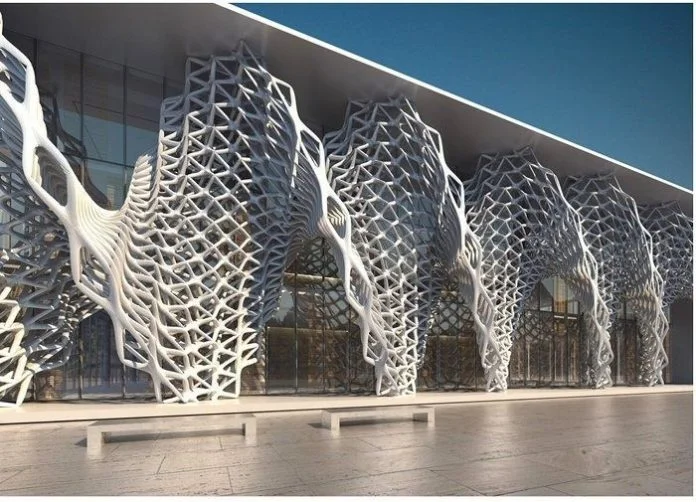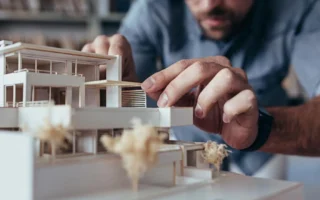Introduction:
In the ever-evolving landscape of architecture, a new paradigm has emerged, pushing the boundaries of creativity and innovation: parametric architecture. Far from traditional design methods, parametric architecture represents a shift towards computational thinking, where algorithms and digital tools drive the design process. But what exactly is parametric architecture, and how does it reshape our understanding of space, form, and structure? Let’s delve into this fascinating realm to uncover its intricacies.
1.Understanding the Fundamentals:
The Essence of Parametric Architecture: Defining the Concept
Parametric architecture can be understood as an approach to design that utilizes algorithms and parameters to generate complex, adaptive forms and structures. Unlike conventional design methods, which rely on fixed geometries and predetermined solutions, parametric architecture embraces variability, iteration, and emergence. It’s about harnessing the power of computation to explore a vast landscape of possibilities and potentials, shaping environments that are responsive, dynamic, and site-specific.
2.From Algorithm to Architecture: The Process of Parametric Design
At the heart of parametric architecture lies the process of parametric design, a cyclical journey marked by exploration, iteration, and refinement. It begins with the formulation of design parameters—variables that define the behavior and characteristics of a system. These parameters could range from environmental conditions and material properties to user preferences and spatial requirements. Through the use of parametric modeling software, architects can then create algorithms that generate and manipulate these parameters, producing an infinite array of design iterations. This iterative process allows architects to explore multiple design alternatives rapidly, fine-tuning their proposals based on performance criteria and aesthetic considerations.
3.Embracing Emergence: The Role of Generative Algorithms
Generative algorithms lie at the heart of parametric architecture, serving as the engine that drives the design process. These algorithms operate based on a set of rules and constraints, which govern how design elements interact and evolve over time. By encoding design intent into algorithmic logic, architects can create systems that exhibit emergent behavior, producing complex, organic forms that transcend traditional notions of geometry and symmetry. Generative algorithms enable architects to explore novel design solutions, uncovering hidden patterns and relationships within the data.
4.Dynamic Adaptation: Parametricism and Responsive Architecture
Parametric architecture is inherently adaptive, capable of responding to a myriad of external factors and stimuli. This responsiveness is exemplified by the concept of parametricism, which advocates for the creation of dynamic, contextually sensitive environments. In parametricism, buildings and urban spaces are designed to adapt and evolve in real-time, responding to changes in user behavior, environmental conditions, and social dynamics. This approach blurs the boundaries between architecture and interaction design, fostering environments that are not static objects but living systems capable of self-organization and adaptation.
5.Material Explorations: Pushing the Boundaries of Fabrication
Parametric architecture opens up new frontiers in material exploration and fabrication, enabling architects to realize complex forms that were previously unthinkable. Advances in digital fabrication technologies, such as 3D printing, robotic construction, and CNC milling, have democratized the production process, allowing architects to translate digital designs into physical reality with unprecedented precision and efficiency. This convergence of digital design and fabrication empowers architects to push the boundaries of materiality, creating structures that are both innovative and sustainable.
6.Bridging the Divide: Interdisciplinary Collaborations in Parametric Architecture
Parametric architecture thrives at the intersection of multiple disciplines, fostering collaborations between architects, engineers, programmers, and artists. This interdisciplinary approach allows for the integration of diverse expertise and perspectives, enriching the design process and pushing the boundaries of innovation. By breaking down silos and fostering cross-pollination of ideas, parametric architecture opens up new avenues for exploration and discovery, transcending the limitations of any single discipline.
7.Beyond Form: Parametricism and Spatial Experience
Parametric architecture is not merely about creating visually striking forms; it’s about crafting immersive spatial experiences that engage the senses and evoke emotion. By harnessing the power of parametric design, architects can sculpt spaces that respond to the needs and desires of their occupants, fostering connections, and enhancing well-being. Whether it’s designing interactive installations, adaptive facades, or kinetic structures, parametric architecture invites us to rethink our relationship with the built environment, blurring the line between architecture and experience.
Conclusion:
Pioneering the Future: The Promise of Parametric Architecture As we stand on the cusp of a new era in architecture, parametric architecture offers a glimpse into the possibilities of the future. By embracing computational thinking, adaptive systems, and digital fabrication, architects can reimagine the way we design, build, and inhabit our world. Parametric architecture challenges us to think beyond the constraints of tradition, opening up new horizons of creativity, sustainability, and human-centric design. In this ongoing quest for innovation, parametric architecture serves as a beacon of inspiration, guiding us towards a more dynamic, responsive, and resilient built environment.




